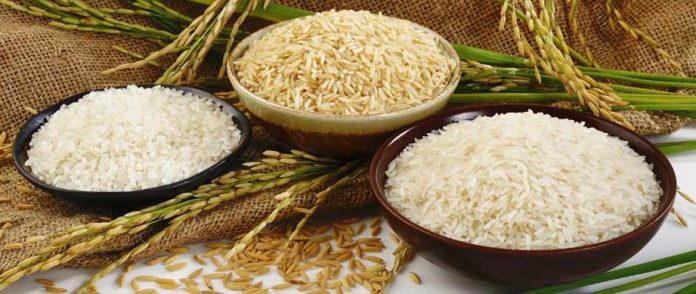ISLAMABAD
Like textile exports, the foreign trade of rice has also shown negative growth during the last two years with a reduction of over $ 500 million. The export of rice which was recorded $ 2 billion two years ago (2014-15) has reduced to $ 1.46 billion during the past 11 months of this financial year (2016-17).
The rice exports were recorded $1.8 billion in 2015-16.
According to fresh data, Pakistan exported 409,669 tonnes of basmati rice in July-May 2016-2017 fetching $ 383 million as compared to 439,662 tonnes ($407.7million) in the same period of last year.
Exports of other rice varieties fell to 2.89 million tonnes ($1billion) during the same period as against 3.49 million tonnes ($1.31billion) a year ago.
During the preceding fiscal year, rice was sowed on 2,724,000 hectares, almost the same area as compared with a year earlier.
According to exporters the major reason of the overall trend of reduction in exports is non-competitiveness of product in the international market where Pakistan has to face stiff competition with India, producing same quality of rice.
Former Vice Chairman of Pakistan Rice Exporters Association (REAP) Taufiq Ahmed Khan, told Pakistan Today the demand for Irri rice of Pakistan has been reduced due to high production by other countries including India.
He said apart from the competition abroad, the negative propaganda of “plastic rice” or rice mixed with plastic in Pakistan, through social media has also damaged image of the product in international market.
A video being circulated in social media shows that plastic rice are being manufactured on a large scale in some countries and was smuggled into Pakistan as well. The videos shared on the social media show that plastic rice are highly sticky and take a round or oval ball shape in hand before eating.
“The fact is that there is no such thing as plastic rice in Pakistan,” Taufiq said adding “no trader or exporter even cannot afford sale of such made up as plastic rice as it is costlier than original rice. It is highly irrational to think about such rice which even cannot be consumed.”
Following the negative propaganda, government in Dubai had tested various qualities of rice arriving in the emirate and had found nothing dubious.
“Unfortunately Pakistan lacks media campaigning system or institution to counter such propaganda. We eat only locally produced rice and the commodity is largely not being imported,” he said.
He further suggested that the government should hire social media campaigners for image building of Pakistani rice abroad.
Rice is a staple in Pakistan. It is the third-largest crop after wheat and cotton in the country, and is grown over 10 per cent of the total cropped area.
According to another exporter of rice, the government is only focusing or facilitating textile sector while ignoring the rest of sectors contributing to overall exports. Despite repeated requests, the ministry of commerce has not proposed any compensation or incentives for the rice sector.
Rice sector is second largest contributor to overall exports of the country but this sector is not being given due importance and weight by the government.
“We are not even recognized as an industry and we want our sector to be given due share in the export incentive package to achieve further heights and more precious foreign exchange for the country,” Taufiq said, adding that government should extend 5 to 7 per cent rebate to the rice exporters like textile exporters.




